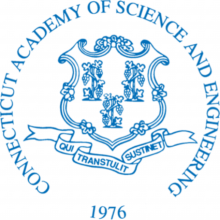Rocky Hill, CT —The Connecticut Academy of Science and Engineering (CASE) will conduct a briefing for the Connecticut Energy Advisory Board (CEAB), on the CASE study entitled, Advances in Nuclear Power Technology, this Friday, December 9, 1:00-5:00 p.m., at the Legislative Office Building (Room 1C) at the State Capitol in Hartford. The full report and executive summary are available at www.ctcase.org (scroll down to “Reports and Studies”).
CASE performed this study on behalf of the CEAB with the goal of informing and assisting the leadership of the state in making decisions that are in the best interest of Connecticut citizens in regards to nuclear power in the 21st century and beyond. The scope of this study was based on work items identified in the Nuclear Power Section of the CEAB’s 2010 Integrated Resource Plan (IRP) and by the Nuclear Power Sub-Committee of the CEAB.
In addition to providing an overview of nuclear power, nuclear plant operation and recent advances in nuclear power technology, the study also includes a comparison of nuclear power to alternative energy sources and considerations for nuclear power plant development in Connecticut. The study includes two sub-studies: an Economic Impact Analysis which assesses the economic and fiscal impacts of replacing or adding baseload generation in Connecticut and a Benchmark Survey of public attitudes toward nuclear power.
Nuclear power has been the primary source of emission-free electricity generation in Connecticut since 1970. Currently, about half of Connecticut’s electricity is generated from the two operating nuclear plants at the Millstone Power Station (Units 2 and 3) in Waterford. The operating licenses for these units have been extended to 2035 and 2045, respectively. While retirement of these units is well into the future, it will require many years for planning and approvals for their replacements.
The CASE study found that there are several benefits to pursuing nuclear power for Connecticut’s future: lower-cost baseload generation by replacing marginal cost electricity generators with nuclear power; emission free electricity generation; fuel diversity to reduce the New England region’s reliance on natural gas and fossil fuels for electricity generation; and the creation of new jobs by expanding the highly trained workforce required to safely operate nuclear power plant units.
To achieve these benefits, the CASE study notes that the nuclear industry must successfully demonstrate that advanced construction and modular manufacturing techniques will ensure that nuclear power plants can be constructed and delivered on budget and on schedule, and that new and current nuclear plants can be operated at a high level of safety and security. Furthermore, the state’s leadership must aggressively demand that the federal government meet its legal obligations regarding spent nuclear fuel by expeditiously providing for the storage, geologic disposal, and funding of nuclear waste management. The study also notes that policy changes must be implemented so that financing alternatives are available for constructing a nuclear power plant in a deregulated market.
- Advances in Nuclear Power Technology – Key Points
- Advances in Nuclear Power Technology – Facts and Figures
###

